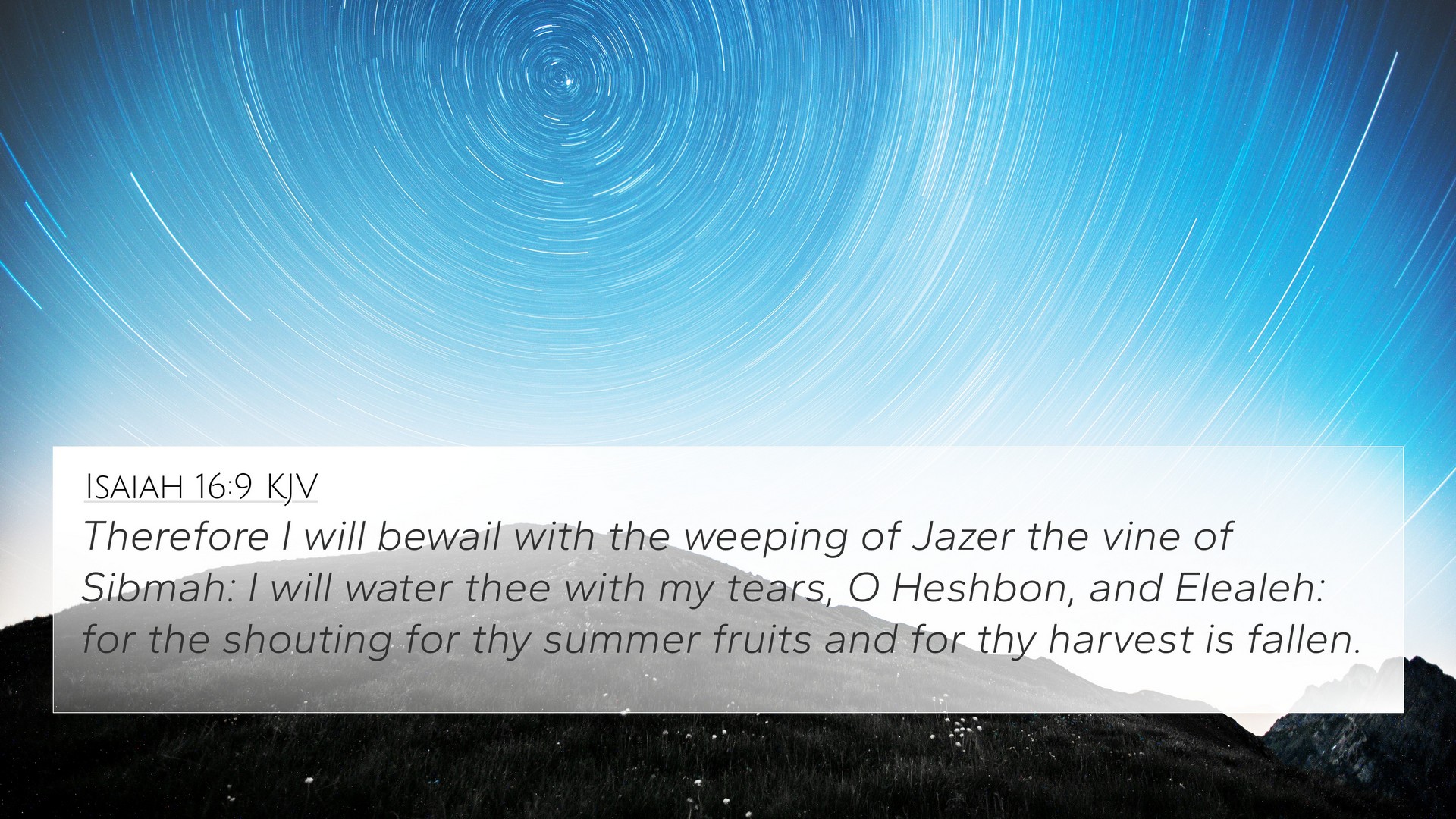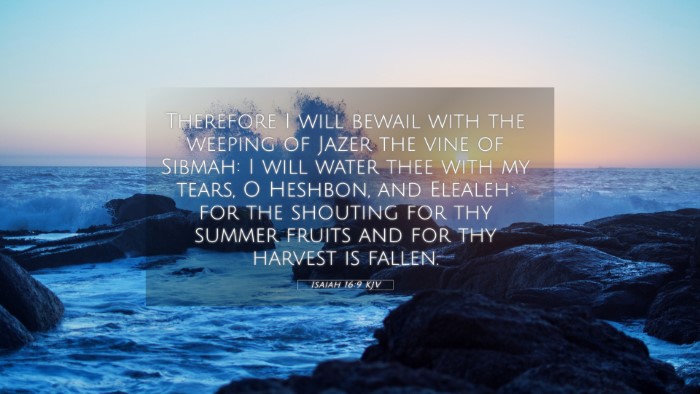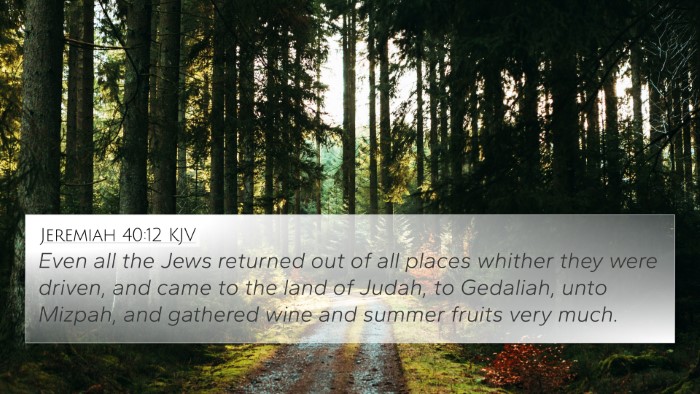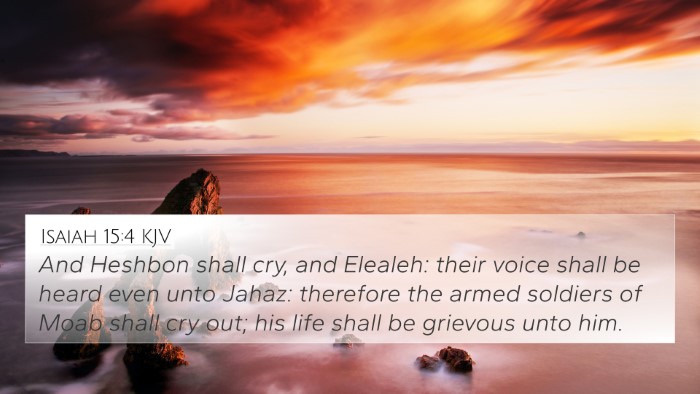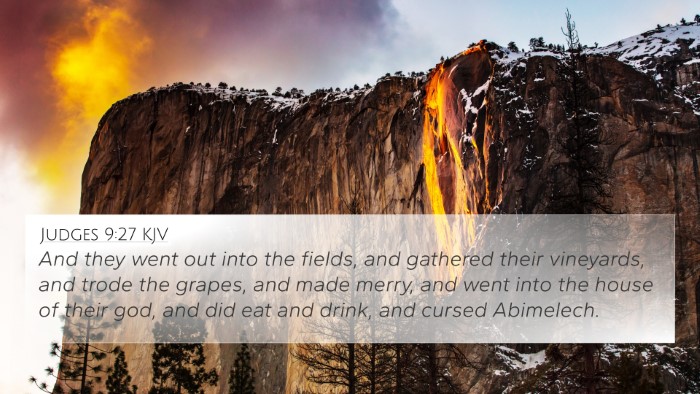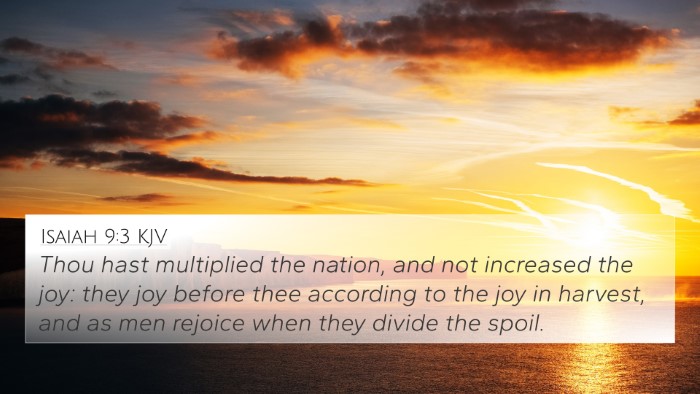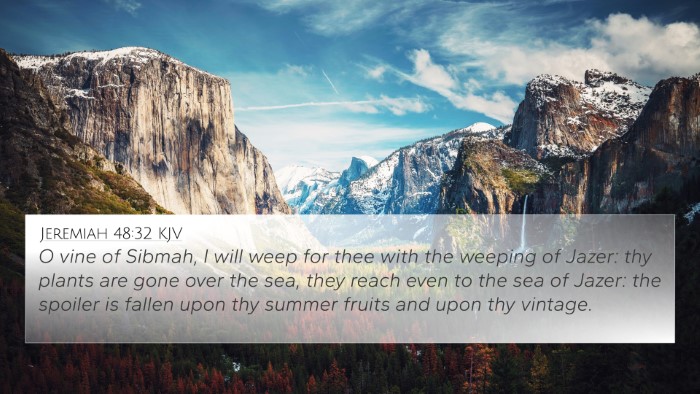Understanding Isaiah 16:9
Verse: Isaiah 16:9
“Therefore I will weep with the weeping of Jazer, the vine of Sibmah: I will water thee with my tears, O Heshbon, and Elealeh: for the shouting for thy summer fruits and for thy harvest is fallen.”
Summary and Commentary
This verse captures a profound expression of sorrow and compassion towards the land of Moab. The imagery of weeping reflects deep emotional distress over the calamities that have befallen the people and their resources. Various commentaries offer valuable insights into the significance of this verse, helping us understand its implications profoundly.
Matthew Henry’s Commentary
Matthew Henry notes that the prophet expresses his empathy for Moab, indicating that the devastation is not merely a geographical loss but a deep personal sorrow. The mention of “Jazer” and “Sibmah” suggests that these places, known for their rich vineyards, are now devastated, leading to a lament for lost beauty and prosperity. Henry emphasizes the correlation between nature and the spiritual state of the people, painting a picture of desolation where joy once flourished.
Albert Barnes’ Commentary
Albert Barnes' interpretation highlights the agricultural metaphors in the verse, indicating that the destruction of Moab’s vineyards signifies broader implications for its economy and sustenance. The act of watering the land with tears symbolizes not only mourning but also a plea for restoration. Barnes adds that this passage underscores God's judgement, yet it reflects His enduring compassion even amidst discipline.
Adam Clarke’s Commentary
Adam Clarke expands on the sorrow expressed in the verse, noticing the depth of feeling reflected in the prophetic words. He points out that the weeping signifies a profound identification with the suffering of the people. Clarke emphasizes the historical context in which Moab is depicted as a people who faced inevitable destruction, elevating the prophetic lament to an importance that transcends mere observation, transforming it into an empathic experience.
Cross-Referenced Insights
This verse presents rich opportunities for cross-referencing other biblical texts. Below are some key verses that reflect thematic parallels related to Isaiah 16:9:
- Jeremiah 48:31 - This verse echoes the lament for Moab, providing a context for the mourning expressed in Isaiah.
- Lamentations 1:16 - This verse captures the sorrow over lost joy, paralleling the weeping imagery of Isaiah.
- Psalm 126:5 - It speaks of those who sow in tears, reflecting the axis of suffering and resultant restoration.
- Matthew 5:4 - "Blessed are those who mourn, for they will be comforted" connects the emotional themes of loss and future hope.
- Romans 12:15 - "Rejoice with those who rejoice; mourn with those who mourn" mirrors the communal aspect of mourning presented in Isaiah.
- Revelation 21:4 - This verse provides a future hope where God wipes away all tears, contrasting current sorrow with anticipated joy.
- Luke 19:41 - Jesus weeps over Jerusalem, showing a direct link between prophetic mourning and His own heart for the lost.
- Joel 1:5 - Laments for agricultural failures resonate with the mourning described in Isaiah regarding the loss of harvest.
- Hosea 10:1 - The metaphor of fruitful land suffering due to sin, tying in the consequences of national disobedience.
- 2 Corinthians 1:4 - Comfort in suffering echoes the themes of sorrow and eventual consolation established in the prophets.
Thematic Connections and Conclusion
The lament over Moab in Isaiah 16:9 serves as a powerful reminder of the emotional weight that the prophets carried for their people. Each cross-referenced verse offers a different perspective on grief, compassion, and hope, showing that the themes of sorrow and restoration reverberate throughout Scripture. The interconnectedness of these biblical texts encourages a deeper understanding of God's character – a God who grieves with His people while also leading them toward redemption.
Tools for Bible Cross-Referencing
For those wanting to dive deeper into cross-referencing scriptures like Isaiah 16:9, it is essential to utilize various tools:
- Bible concordance - A helpful resource for finding words and their occurrences throughout the Bible.
- Bible cross-reference guide - These guides provide a systematic approach to identifying links between verses.
- Cross-reference Bible study - Engaging in this method allows for comprehensive exploration of themes across scripture.
- Bible reference resources - Available in both print and digital formats, these resources help uncover relational scriptures.
- Bible chain references - This method guides readers through scriptures that lead from one verse to another, enhancing thematic study.
Conclusion
Isaiah 16:9 encapsulates the profound grief of the prophet while simultaneously opening a dialogue about God's desire for restoration. By engaging with this verse and its cross-references, we better understand the interactions between sorrow, hope, and divine intervention within the Biblical narrative. Each connection reveals enriching insights that illuminate the ongoing story of God’s relationship with humanity.
